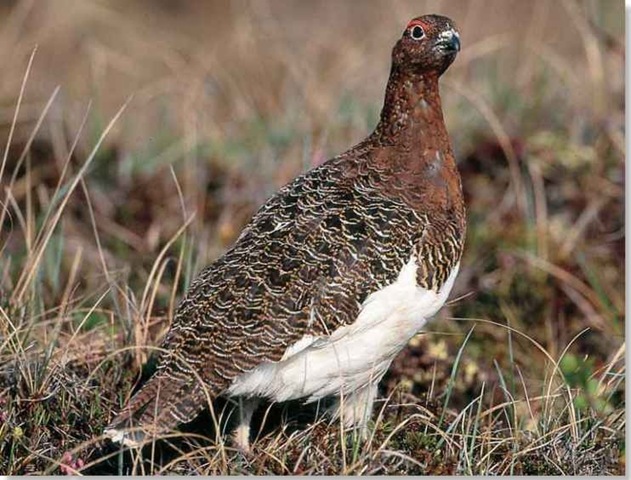ORDER
Galliformes
FAMILY
Tetraonidae
GENUS & SPECIES
key features
• In tune with the seasons, it alters its diet to \ survive harsh winters and has three plumages a year to blend with changing surroundings
• Freezes on the spot when danger approaches, only “exploding” from cover at the last moment
• Chicks run and feed within minutes of hatching
where in the world?
In a broad band across the northern hemisphere, from Alaska and British Columbia east through northern Europe and Russia to Siberia
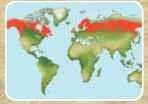
LIFECYCLE
The willow ptarmigan hides from danger by flattening itself against the ground and staying motionless. It shoots off like a rocket if danger persists and resumes feeding when all is clear.
HABITAT
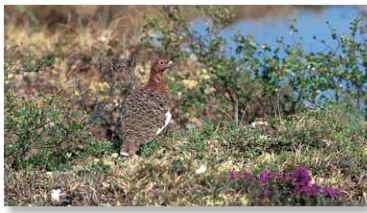
A Midnight sun In the north of the ptarmigan’s range, summer daylight lasts 24 hours.
The willow ptarmigan lives in tundra, moorland and Alpine meadows, where the vegetation rarely grows above its eye level. Plants here are ground-hugging herbs, mosses and grasses. The willow ptarmigan favors areas scattered with stunted willow and birch trees and berry-bearing shrubs; these provide vital food sources in fall and winter.
The willow ptarmigan lives in open, rather featureless terrain, but tends to inhabit areas that have a few elevated sites, such as ice ridges or rocks.The male uses these as “stages” when displaying to females. In very harsh winters, the ptarmigan moves to sheltered valleys or thickets close to rivers.
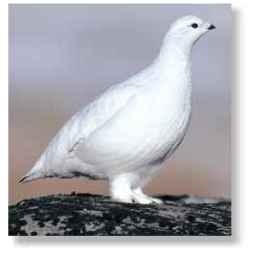
White-out In winter, when the tundra is buried under snow, ptarmigans turn all white.
VANISHING ACT
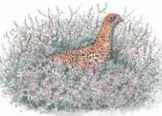
Freeze…
While feeding on tender shoots, an ever-alert willow ptarmigan sees a red fox. It crouches down in the low vegetation and waits…
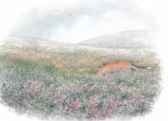
Hold tight…
…until it’s safe to move. Staying still amid the grasses, it evades the notice of the hungry fox, which locates prey by sight and sound.
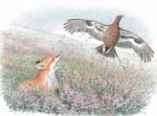
Lift-off…
Timing the final escape takes nerve.When the fox is almost in pouncing range, the ptarmigan suddenly explodes into the air…
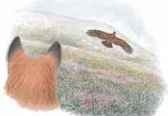
Away
…startling the predator.While the fox gathers its wits, the ptarmigan powers away to safety with rapidly beating wings.
Incubating females are so sure of their “invisibility” that humans can walk up and touch them.
The male’s throaty call sounds very like “go back, go back, go back.”
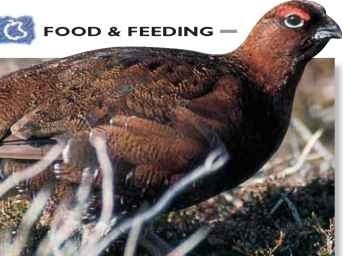
BEHAVIOR
The northern tundra zone abounds with predators (the Arctic fox, weasle, snowy owl and gyrfalcon). The ptarmigan has three plumages and melts into the changing Arctic landscapes, escaping their attention.
The ptarmigan matches summer ground cover with brown and black-and-white flecked feathers (right).Its white winter plumage provides camouflage and insulation. Between these extremes, it is brown with a liberal “dusting” of white to mimic partial snow cover
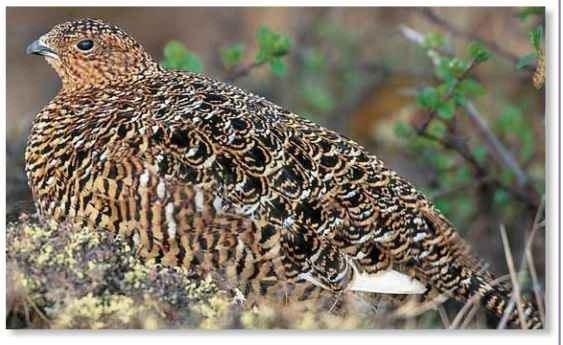
CONSERVATION
Although common across its range, the willow ptarmigan has population explosions of 300-500%, followed by crashes, often in 10-year cycles.These may be the result of changes in soil fertility and, therefore, plant growth.
Time of plenty Spring brings a profusion of food (red grouse form).
Food is hard to come by in northern winters, but the ptarmigan survives on a monotonous diet of buds and twigs of dwarf willow and birch trees. In spring, the menu broadens to include green shoots, seeds, berries and a few insects and other invertebrates.
The quality of the willow ptarmigan’s winter diet is so poor though, that the female’s body can’t cope with the demands of producing eggs in early spring. Instead, the female has to wait until the food supply improves toward summer and she has put on sufficient weight, before she can nest.
BREEDING
Each pair of ptarmigan stays together through the breeding season, with males defending a territory with loud, croaking calls. The female sits on her nest, a shallow hollow in the ground lined with grass, relying on excellent camouflage to remain hidden.The male helps brood and defend the eggs, which hatch after 20 days. Chicks develop rapidly, leaving the nest soon after hatching.They can run and feed themselves in minutes, but their parents need to warn them of danger in their first three months.
Quick on their feet Chicks hatch with open eyes, strong legs and down.
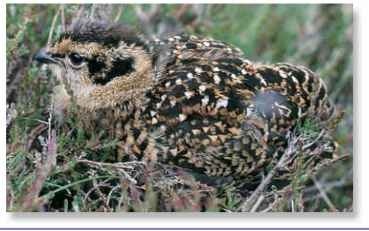
PROFILE
Willow Ptarmigan
Like a heavyweight “survival jacket,” the willow ptarmigan’s plumage provides protection in northern winters and camouflage against predators.
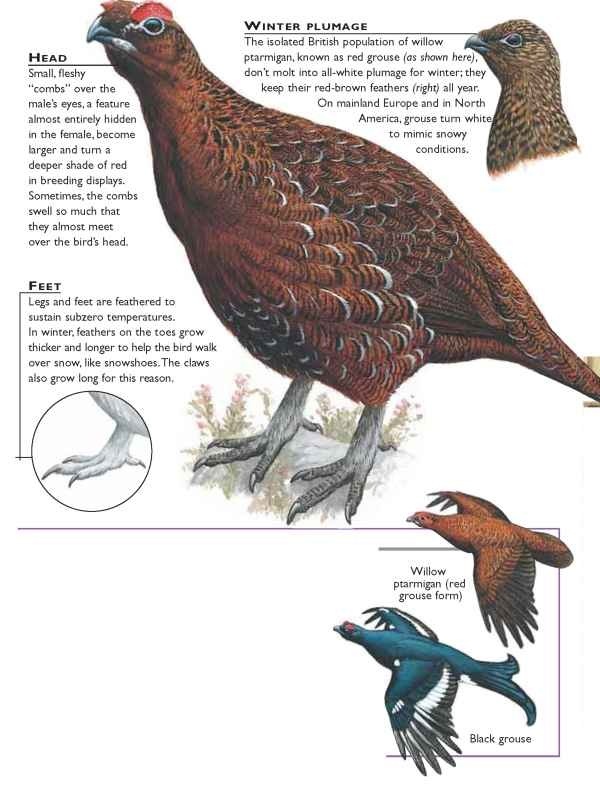
CREATURE COMPARISONS
The black grouse (Tetrao tetrix) inhabits transitional areas separating boreal (northern) forest from moorland or tundra; there’s a marked difference between male and female, unlike the willow ptarmigan. Known as a blackcock, the male black grouse is spectacular in its glossy, velvet-black plumage and sports a lyre-shaped tail.The dull, speckled-brown female can be mistaken for a willow ptarmigan, but its plumage is darker.
At a lek (display mound), blackcocks perform elaborate rituals for the females’ attention. Cocking and spreading their tails and drooping their wings, they expose pure white undertail feathers.
| VITAL Weight |
STATISTICS 1-1.5 lbs. |
| Length | 1-1.5′ |
| Wingspan | 2′ |
| Sexual Maturity | 1 year |
| Breeding Season | Summer in the north |
| Number of Eggs | 2-15, usually 8-11 |
| Incubation PERIOD |
22 days |
| Fledging Period Typical Diet Lifespan |
Chicks develop rapidly, flying short distances within 2 weeks Buds and twigs of willow and birch (winter); seeds, shoots, fruits and insects (spring and summer) 2 years |
Related species
• The 17 grouse species in the family Tetraonidae are related to pheasants, partridges and quails. Grouse are a northern hemisphere group, with 7 species in Eurasia, 8 in North America and 2 species, the willow and rock ptarmigan (below), occurring in both regions.

